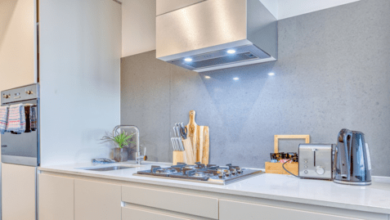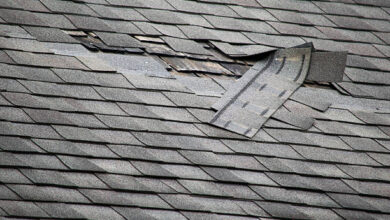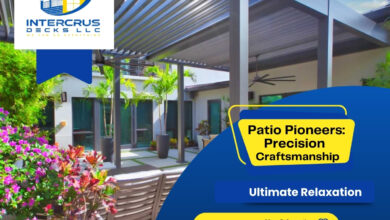Why Should You Take Special Care of Live Edge Dining Room Table?
A dining room table is not just for serving food but much more than that; it is the center of family gatherings and jovial discussions. There are so many styles in the market, however, live edge dining room tables are unique due to their intricacy and naturalism.
The elegance of these tables is created by using salvaged hardwood that is sourced, milled, and kiln-dried on-site. This is why their edges and contours look so natural because they are. These are unique products that cannot be found in stores that sell furniture produced in full compliance with the standards of industrial production.
Here, we will discuss why these live edge dining room tables need extra TLC, as well as how to maintain them so they remain a beloved part of your house for many years.
Maintenance to Preserve Beauty
Regular Cleaning
Maintaining the beauty of a live edge dining room table requires that you clean it often. It is also important to note that dust and debris accumulation is very common on the surface of the wood as well as within the natural imperfections of the wood surface. To clean the table, you should use a soft and dry cloth to clean it frequently. For a deeper cleaning, clean with a damp cloth that has been soaked in a mild soap solution, and make sure to dry it instantly to avoid water damage.
Protecting the Surface
Ordinary live edge tables are made of natural wood and therefore it is easily scratched, stained, or affected by heat or moisture. Coasters, placemats, and trivets can often be helpful in preventing damage to the surface of the item from hot dishes, staining from spills, and even rough surfaces that might scratch the item. Do not put hot things directly on a wooden table, as this may stain the wood or make it less shiny.
Addressing Environmental Factors
Humidity and Temperature Control
The main problem with wooden objects is that they react to fluctuations in humidity and temperature by swelling and shrinking. It is advisable to place your live edge table in a stable environment to avoid warping or cracking of the table. Do not put it close to the fireplaces, or radiators or expose it to direct sunlight as this dries the wood and is not good for the item.
Handling Spills
You are bound to spill something over your tables during its lifetime; especially in the dining room. In the event you have a spill, make sure that it is wiped off as soon as possible to avoid the liquid soaking into the material and causing discoloration or warping of the wood. This step is crucial when it comes to epoxy tables for sale that combine the use of wood and epoxy resin in the construction of the table.
Enhancing Longevity
Regular Oiling
To make your live edge table stay shiny and not dry, it is recommended to oil the table from time to time. You should also polish the wood regularly with a high-quality wood oil as recommended by the manufacturer to nourish and protect it. It also helps to make the wood look even more beautiful and gives it protection from moisture and general wear and tear.
Refinishing When Necessary
Despite constant care, after some years your live edge table may show signs of wear. The table can be refinished to make it look as it was before it started showing signs of wear and tear. This entails refinishing the surface to correct any scratches or imperfections, among other things. Refinishing the custom live edge tables will maintain the natural beauty of the wood even after years of being used.
Selecting the Proper Table for the Room
Epoxy Tables for Sale
Custom live edge tables are a part of nature, which are coated with epoxy resin that provides them with a contemporary look. These tables have the most unique designs, the epoxy covers all the gaps and cracks in the wooden material to give a finish and artistic view. When selecting an epoxy table, people should look at the color of the resin to match that of the dining room.
Custom Kitchen Table
If you choose to incorporate a custom kitchen table with a live edge, your dining area can become very welcoming. When you have a piece made to your specifications by a craftsman, you get to choose the type of wood, the type of live edge design you want, and things such as the epoxy inlay or custom finish among other considerations. This way, your table will not only seamlessly blend into your home but will also speak volumes about your taste in home decoration.
Understanding Wood Characteristics
Different Species of Wood and Their Characteristics
Walnut: Popular for its deeply brown hue and elaborate grain structures, walnut is both strong and elegant. Due to its denseness, it is less susceptible to scratches or damage hence suitable to be used on dining tables. That’s why live edge walnut tables are so famous.
Maple: Maple, another favorite, is light in color and has a fine and consistent grain formation. And because it is hard wearing it is ideal for areas of high traffic.
Oak: Oak comes with a unique grain pattern and a rather strong and heavy texture. It is a very strong and sturdy material, thus it is long-wearing and is a great choice for furniture.
Cherry: Cherry wood has a warm reddish-brown color that tends to deepen with age to what is known as patina. It is a moderately hard kind of wood with a fine and even grain.
Consequences of Curing Under High Moisture and Humidity
Wood is a hygroscopic material, which indicates that it can gain and lose moisture depending on certain parameters. This feature can make it expand and contract, and if not well controlled, it causes such things as warping, cracking, or splitting. It is recommended to use a humidifier if you live in a dry climate, while a dehumidifier is essential if the climate is humid to ensure that the moisture levels of the live edge table are controlled.
Understanding the Craftsmanship Of Live Edge Tables
Sustainable Sourcing and Crafting
The process of making live edge tables starts with the choice of the appropriate and preferably environmentally friendly wood. Seasoned, premium, or certified timber is often procured by artisans and craftsmen who practice sustainability. It not only protects nature but also guarantees that the wood is different and if it is so, then it can be highlighted in the final product.
Technique and Style
Luther has mentioned that creating a live edge table is a complex process whereby the table is carved out of the trunk of a tree in such a way that the outer edge is preserved and may also retain its bark, knots, and defects. These natural elements are incorporated into a functional piece of furniture by highly skilled artisans who sometimes use hand tools and techniques, and do this in such a way that the beauty of the wood is preserved.
Enhancing Home Value
One of the most attractive and valuable projects you can create in your home is a carefully sculpted live edge table. Because these tables retain the natural edge of the wooden board, the tables often become the topic of conversation when placed in dining rooms and act as an eye-catching centerpiece.
Conclusion
No matter if you opt for the live edge walnut table, the epoxy table, or the custom table designed from live edge walnut and epoxy, the effort put into the care will be rewarded with the timelessness and sophistication of the furniture. Appreciate the beauty and individuality of live edge tables in your dining area and feel the prominent ambiance they create.


